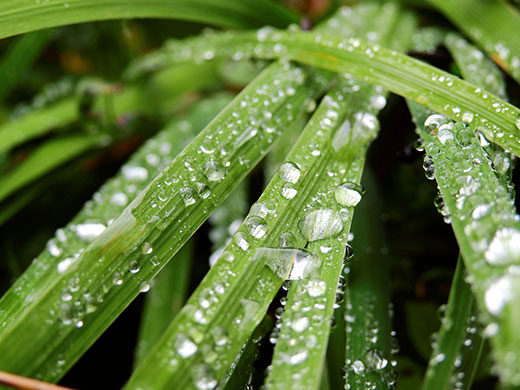 Heavy rain can cause a thick crust that blocks oxygen in garden soil.
Heavy rain can cause a thick crust that blocks oxygen in garden soil.
Storm brewing? Tips for protecting garden plants
K-State horticulture expert urges gardeners to keep eye out for severe weather
May 6, 2021
MANHATTAN, Kan. – There’s a common joke in many parts of the country – and Kansas is no exception – that if you don’t like the weather…well, wait 15 minutes.
That bit of sarcasm should be warning enough for Kansas gardeners who are enjoying mostly mild conditions so far this spring. It may be nice today, but watch out for tomorrow.
“We are entering the storm season, and various areas of the state will likely have high winds, excessive rainfall and hail,” said Kansas State University horticulture expert Ward Upham.
Upham said Kansans should be on the ready to help garden crops withstand the potential for severe weather. Depending on the type of adverse conditions, here are a few of his recommendations:
Heavy rain
“The force of rainfall pounding on the soil can result in a thick crust that prevents seeds from emerging and partially blocks oxygen from reaching the plant’s roots,” Upham said. To correct the problem, gardeners should lightly scrape the soil surface after it is dried, being careful not to till too deeply that you damage young roots.
Standing water
Standing water cuts off oxygen to the plant’s roots and damages the plant if it doesn’t drain quickly enough. “Most plants can withstand 24 hours of standing water without harm,” Upham said. “But hot, sunny weather can make a bad situation worse because the water becomes hot enough to ‘cook’ the plants.”
There are few remedies to standing water caused by severe weather, though Upham said gardeners cold try cutting a small channel that allows the water to drain.
Hail damage
Most plants should recover quickly from a hail storm, Upham said, because leaves regenerate quickly. “The situation becomes more serious if the stems and fruit were damaged,” he said. “The plant can recover from a few bruises, but if it looks like the plants were mowed down by a weed whip, then you should re-plant.”
Leaning plants
Water or wind can cause plants to lean sharply in one direction. There’s not much to do in this case, as they should start to straighten after a few days, according to Upham. “Don’t try to bend them back as they often break easily,” he said.
Upham and his colleagues in K-State’s Department of Horticulture and Natural Resources produce a weekly Horticulture Newsletter with tips for maintaining home landscapes. The newsletter is available to view online or can be delivered by email each week.
Interested persons can also send their garden- and yard-related questions to Upham at wupham@ksu.edu, or contact your local K-State Research and Extension office.

